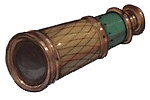The Space Between
A Dark Supernatural Roleplay Experience in Second Life
New Player Guide
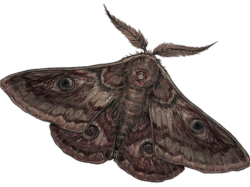
Welcome to The Space Between, a roleplay sim in Second Life. Explore a land outside of reality - a place where lost things slip through, and anyone from all across time, space, and existence can end up. Create a character, and write their story.
01
What is The Space Between?
The Space Between exists is a place Outside of Reality, filled with lost things. Bits and pieces of misplaced objects from all over time, space and any number of worlds have slipped through and remain trapped. Nobody chooses to come here, but those who wander into this place are rarely able to leave.
Existing in a convergence between realities, any number of lost things (and people) might find they've no-clipped through existence and become trapped here! There are no set races, and most types of characters can exist.
To learn more about the World and Lore surrounding it, check out the Guides section as well as the FAQ Channels in our Discord. Make sure to take a look at our Wiki which has detailed information on The World & TSB Conflict System.
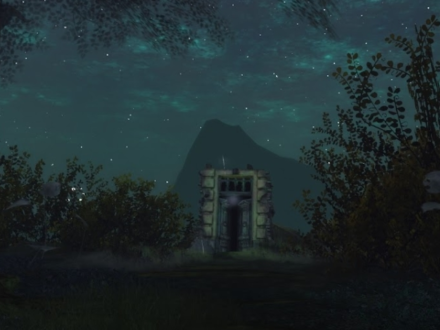
02
Sim Rules & Requirements
To visit the sim, go to the Landing Zone. Our doors are open to everyone, whether for roleplay or just to look around. If you're visiting:
- Keep Script Count under 100 and Complexity under 150k. You can check this at the Landing Zone.
- Follow all Avatar & Character Guidlines.
Orient yourself with the Sim Rules before continuing.
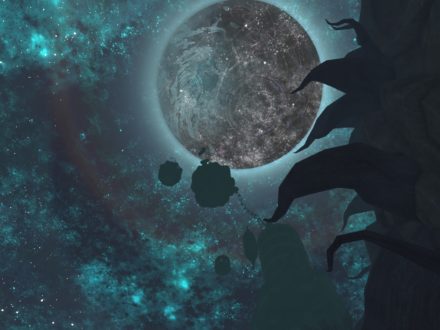
03
New to Second Life?
If you're completely new to Second Life, we're happy to have you! Here are some links to guides and information which might help you get started.
Feel free to join the Discord with any questions you might have about starting out.
If you're new to Roleplay as a whole, it might help to check out some RP Guides & Tips
04
Create a Character
Character Creation allows players to represent their characters' skills, abilities, and overall competence against other characters, NPCs, or the rapidly changing landscape of a hostile world.
Characters Begin With:
- (1) Type
- (1) Saga
- (40) Trait Points
- (6) Quick Points
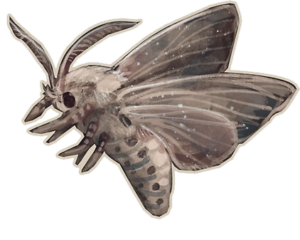
1 . Choose a Type
Type represents a character’s current ‘state of existence’. Type is fluid and may change over a character’s life. There is no list of player races, but all characters fall under a Type.
There are Three Types:
- Mundane - Natural beings (most mortal persons, animals, and other creatures)
- Chambion - Altered Mundanes (Mundane who have been changed, corrupted, or otherwise become no longer 'mortal' or 'natural')
- Outsider - Unnaturally conceived beings (from Fae to Cryptids, Golems to Vampires)
2 . Choose a Saga
Saga is the tale of how a character found their way to The Space Between. Every character has a Saga; which effects Aspect Score.
Aspects describes a character’s innate competence and natural capacity. There are four Aspects. All four helps determine how difficult or easy performing rolls. Aspect goes from -3 to +3 and can only be altered by Saga and some Quirks.
3 . Choose Traits
Traits represent a character's skills and learned proficiencies. Traits directly effect the chances of success when rolling against other players, NPCs, or against chance alone. There are eight Traits. All Traits fall under an Aspect.
40 Points are given to every character to distribute among Traits. Every +1 costs 1 point.
- Characters begin with +0 to all traits. Even with a +0, every character has a chance of success for any action - though the lower the bonus, the more unlikely success becomes.
- When creating a character, trait scores can be increased up to +10 with points. It may be further raised to as high as +14 with Quirks or Oddments and Conditions.
4 . Choose Quirks
Quirks are little things that make a character more notifiable or unique - defining features which set your character apart. These are Positive, Negative or Inbetween -- and may be physical, mental, or any combination of both!
Quirks grant a character advantages or disadvantages in the form of:
- Altering Stats (Aspects, Traits, Mysticism)
- Granting Unique Abilities
- Making Actions more or less Difficult
While players begin with 6 points for Quirks, some Quirks have a negative point value. By taking these more-disadvantaging quirks, a player can earn themselves more points to use for the higher 'value', beneficial Quirks.
Quirks are not required, but when creating a character, players are given 6 Points to pick up to 5 Quirks. More points and space for Quirks can be earned later through sim interaction and roleplay.
Quirks are not required, but when creating a character, players are given 6 Points to pick up to 5 Quirks. More points and space for Quirks can be earned later through sim interaction and roleplay.
5 . Mysticism
The Space Between is a strange place, and those trapped in it are bound by its whims. A character may have been exceptionally skilled in their own reality... but, as this is somewhere outside out realities, their strength is bound by its rules.
Any special ability a character has will fall beneath a type of Mysticism. Mysticism Score is determined by a character's Trait Bonus Score automatically. You cannot manually put points into Mysticism.
05
TSB Roleplay HUD
The Space Between uses a custom HUD made for the sim. Using this HUD allows players to create characters fully inworld with no application.
Up to 6 characters can be created and toggled-through on a fly; All progress, inventory & equipment, currency, and status such as SoS or positive/negative conditions are saved automatically.
Characters advance over time as their story is written. with the HUD!
- Grow Stronger and raise (or lower) in Tier as a character finds their footing within this strange Unreality.
- Scavenge about the landscape of lost things to find strange Oddments which may be used to a character's benefit!
- Earn Secrets by participating in Events, Plots or IC Work
- Engage in Conflict against others-- test your strength, or simply rolling to determine uncertain outcomes in a story.

Rolling and Automation
Rolling is completely automated using the HUD. The stats your character has, Oddments equipped, bonuses or negative effects, and current SoS are calculated with the HUD. Every roll takes all of this into account, eliminating a need for manual calculation or rule-checking.
Character Tier
There are no levels, and after character creation, stats cannot be directly altered. The strength a character holds is understood through their Tier. Character Tier is a representation of how strongly an individual's soul radiates while struggling to exist in Unreality.
As Tier changes, characters gain the benefit of access to certain Conflict Actions, and the ability to use more (and stronger) Oddments at once.
Secrets
Secrets are the currency of this strange place. Secrets are used to buy Oddments, as well as a cost when initiating a Trade.
Secrets are also currently used to increase Character Tier by buying Tier Keys while Playtesting is underway.
Ways to Obtain Secrets Include:
- Daily Pick-Up : Players pick up Secrets daily from designated locations. This resets daily at 3AM SLT.
- Hourly Activity : While on sim with the HUD on and character selected to In-Character, every hour a notification will appear in the HUD. Clicking it will give a character a random number of secrets. After picking up hourly secrets, the timer resets.
- Scavenging : When Scavenging around Piles found across the sim, Players have a chance to gather random amounts of Secrets.
- Events & Sim Activity : Participation in RP Events, Plots, or Contests often awards Secrets!
- IC Work : Working somewhere In-Character awards Secrets for every hour spent 'on the clock' (up to 8 hours a week).
Oddments
Oddments are altered objects which have remained within Unreality long enough to gather strength through changing in strange ways. Characters may equip Oddments to grant Stat bonuses in the form of Trait, Mysticism or DR. Oddments are obtained by Trading with NPCS, or Scavenging.
There are Three types of Oddments:
- Permanent: When used, Permanent Oddments take up an equip space and remain on a character until removed or requirements to use the Oddment are no longer met. If Permanent Oddments are removed, they vanish.
- Temporary: When used, Temporary Oddments take up an equip space and a timer begins. Once that time is up, these Oddments are automatically removed and vanish forever.
- Curatives: Used for Recovery. When used, the effects are immediately given; no equip space is taken up and the item vanishes after use.
The Character Creation & TSB Roleplay HUD can both be picked up at the Landing Zone
Players are not required to use the HUD, however certain events, plots or other roleplay opportunities be unavailable without use of the HUD.
06
TSB Roleplay System
The actions a characters attempts in roleplay often have an element of chance to them - certainty of success or failure isn't always absolute. Rolling Dice adds that element of chance, making it easier to determine the outcome of uncertain actions. In The Space Between, a character's stats help to customize those chances for attempted actions - natural talents and trained skills in the forms of Aspects & Traits.
Rolling is used for actions which don't have a guaranteed success: taking a drink of water, or sitting down on a chair, are usually assured actions. Likewise, actions so difficult they have absolutely no chance of success don't require a roll - they simply can't happen. Dice exist as a middle-ground between the two.
Roleplay Status
In the HUD, you can choose between four different states.
The HUD is set to be OOC by default until you change this. What mode you are currently in will show in your Titler, hovering above your head.
- AFK: Away From Keyboard and not currently available to respond either IC or OOC
- OOC: Out Of Character and currently available to respond to OOC
- Freeform: In Character and not using the Dice/Roleplay System
- Dice: In Character and using the Dice/Roleplay System
Freeform
As the name suggest, Freeform provides you with compete freedom - relying only on creativity for a scene, styrline, or fight to figure out the outcome.
Other than posting order (which can be dropped if players choose), encounters in Freeform are based on consent and open communication. There are two types of rolls that players can choose to use while in Freeform:
- Flat Roll: Choose a Trait, Mysticism, or Flat Date (3D6 or 1D20) to see the results.
- Targeted Roll: Target another Character with a flat Trait or Mysticism roll. Difficulty and Success/Failure will automatically be calculated based on whomever is targeted.
Dice Mode
Drawing on a character's unique stats, equipment, status effects, and more, Dice Mode creates a personalized feel to the rolls your character makes. Whether used for story-driven actions (attempting to steal with Deception) or hostile brawls with the full Conflict System, the rolls you make are impacted by your character.
Dice Mode: Conflict
Dice Mode Conflict is a more tactical and strategic approach to fights - granting character access to unique actions which draw on their Traits and Mysticisms.
Understanding how the Conflict system works can help with strategies, but even players unfamiliar with the system don't need to be worried about performing impossible actions or breaking the rules. Everything from action difficulty and roll calculations, to how much a player can move and how many skills can be done within a turn, are calculated within the HUD. The Space Between uses a 3D6 system (3 Six Sided Dice rolled at once). The Lower a player rolls, the better results, with 3 being a Critical Success and 18 being a Critical Failure.
07
Dice Mode: Conflict Breakdown
Basic Conflict Terms
- SoS: Sense of Self; a representation of a character's well-being (mental and physical).
- Conflict: A hostile encounter between characters which can result in loss of SoS.
- Action Roll: Actions or Skills characters attempt which can have a chance of failure.
- FP: Fatigue Points - these Points refresh at the start of your turn. FP are spent to do things during conflict such and Moving, or attempting Action Rolls.
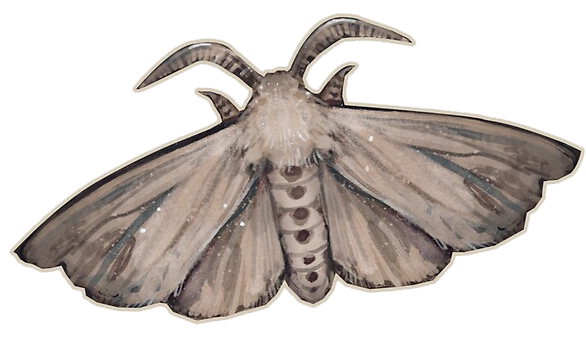
1 . Intro Posting
When attacking another character, posting must be done first. You can't simply run up and smack someone without posting!
2 . Initiative Check
There are two methods of conflict - 1x1 Mode and Group Mode - which can both be initiated with an Attack of Opportunity. An Initiative Check is performed immediately by the HUD upon starting/joining combat.
- 1x1 - Target a single player within 50 meters. Conflict begins immediately after the request is accepted.
- Group - Offer conflict to all players within 50 meters. Conflict begins 60s after the request is initiated.
3.1 . Player [ A ] Roll
The player with the best initiative takes their turn first: They may use up to 5 FP (Fatigue Points) to Move or attempt Action Rolls.
3.2 . Player [ A ] Post
After all Movement and Rolls are done, the player Posts, describing out the actions taken and what the results are.
4 . Player [ A ] End Turn
Player A ends their turn by hitting the End Turn button in the HUD.
5.1 . Player [ B ] Roll
The opposing player (or the player with the next best initiative) takes goes next: They may use up to 5 FP (Fatigue Points) to Move or attempt Action Rolls, just like the previous player
5.2 . Player [ B ] Post
The opposing player then posts, both reacting to actions taken against them (whether or not it was successful) and including the outcome of any rolls they may have attempted.
6 . Player [ B ] End Turn
Player B ends their turn by hitting the End Turn button in the HUD.
7 . Repeat
This order continues until there are no more players in the turn order, at which point the next round begins with Player A once more.
8 . End of Conflict
Conflict Ends when either:
- More than 50% of players vote Yes on a vote to End Conflict
- Only 1 player remains with more than 0 SoS
Players can Vote to End, Flee, or Surrender Conflict through the corresponding buttons in the HUD
